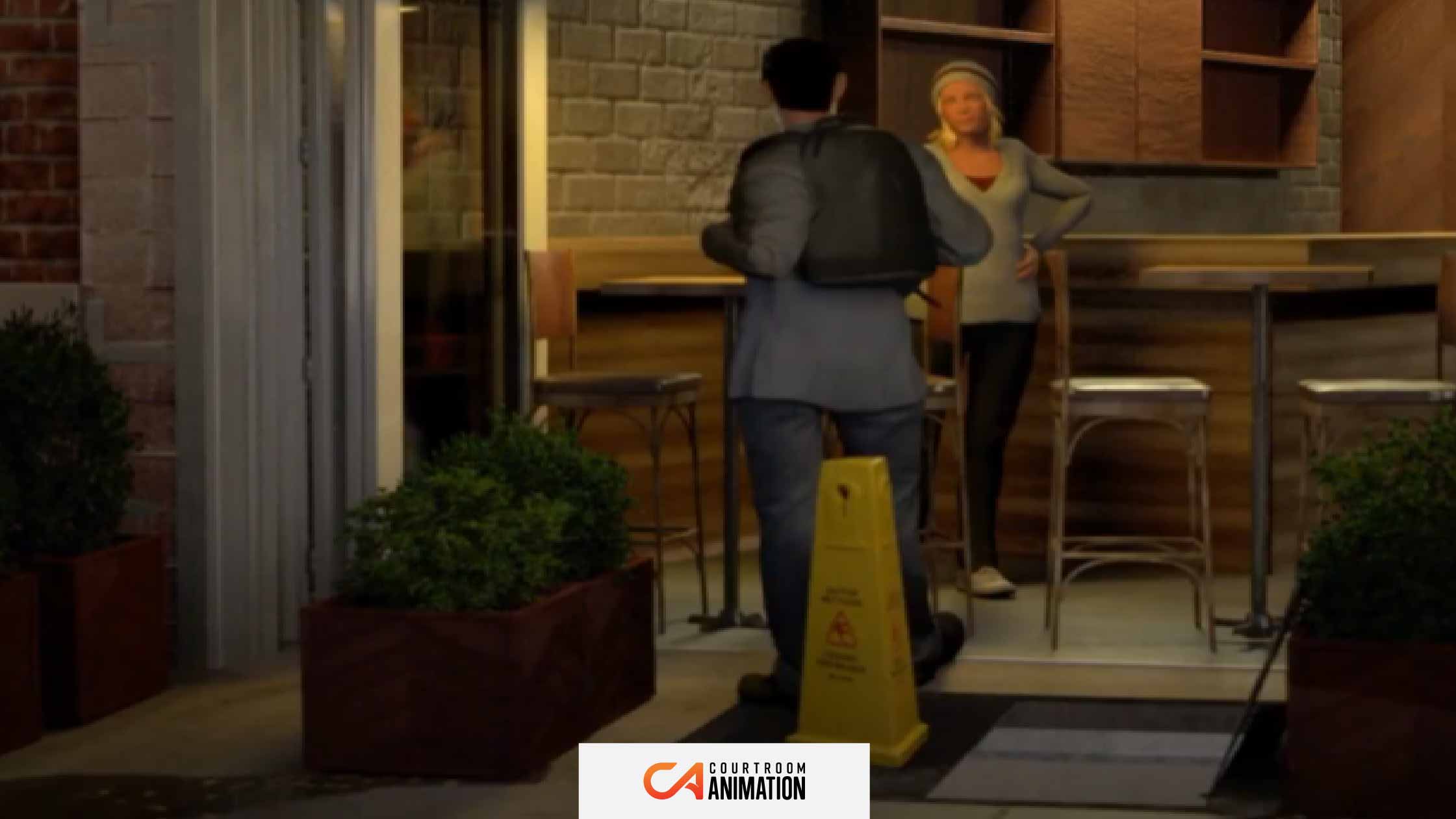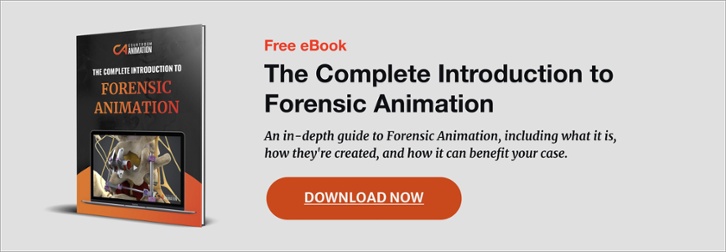
Jurors are required to comprehend massive amounts of information quickly and accurately. This is particularly true in complex personal injury cases. Jurors, like all people, rely on heuristics for decision-making and problem-solving. A heuristic is essentially a mental shortcut strategy that we rely on to make judgments efficiently, but it can cause cognitive bias.
When an attorney is communicating intricate events, a juror could make a biased decision without fully understanding the situation because their mind is built to work through information quickly. In a courtroom, a powerful way to present information is using a visual tool to help a jury process information and avoid any partiality.
Time and time again, forensic science animation has proven to be a highly effective method for depicting events or concepts to a jury in a digestible manner. Let’s take a deeper look at five scientific ways forensic science animation convinces a jury and how this can benefit your case.
1. Show events as they were seen, or could have been seen, from any party or witness’ perspective
When there are multiple eyewitnesses, there are also various angles and perspectives of an event. That’s when it’s beneficial to use forensic science animation. It allows not only for a jury to see through the witness’ point of view for themselves, but to also get the eyewitnesses or parties to corroborate how the event more or less took place.
While eyewitnesses might remember the event differently, an animation can find a general concord between them. Using animation to depict a consistent viewpoint of how the event took place helps mitigate any conflicting viewpoints or opposing narratives, further solidifying your case.
For example, look at this animation of two vehicles colliding on a blind curve:
You’ll notice that our team of visual strategists were able to show multiple angles of the collision:
- The witness’s perspective
- The perspective of the driver who was hit
- A bird’s eye view from above so you can see how it happened
- A trailing view so you get to see the impact of the collision
In this animation, the Courtroom Animation team worked with crash reconstruction experts, laser scan data, vehicle dynamics data, and location-based nighttime photography to create these realistic and accurate depictions of the collision. The exhibits proved extremely useful in securing a settlement in favor of our client.
2. Create accurate depictions of environments or objects that have since changed
When cases drag on for months or longer, it’s common for environments to change. For example, a roadway could have changed lane striping, street signs, or have new obstructions since a collision took place. Whether it’s road signs, bushes or trees that have grown or been cut down, or any other type of environmental change—the only way to accurately depict how the scene looked at the time of the event is to recreate it with forensic science animation.
3. Create an understanding of distances, sizes, and spatial relationships
Visuals allow you to show a jury the distances between objects, the size of objects, and their spatial relationships. Anything that involves vast distances or microscopic objects can be animated and presented to a jury to ensure they fully understand the situation. While a doctor’s testimony goes a long way in convincing a jury, most jurors aren’t doctors and can’t picture the injury for themselves.
For example, in this case, a man dining at an upscale restaurant in New York City took a step back from his table and fell through an open cellar door:
Our team of legal animators was tasked with accurately and realistically depicting the dangerous condition and the mechanism of injury that led to a torn MCL and multiple herniated cervical disks.
You’ll see in the video how the MCL tear and herniated cervical disks were injured with close-up visuals, easy-to-understand descriptions, slowed down effects, and highlighted injury zones for a jury to see.
4. Highlight key aspects of an event by speeding up or slowing down time in an answerable way
Distorting temporal relationships by slowing down or speeding up time is a great way for a jury to observe difficult-to-see concepts or events. In this graphic below, a motorcyclist is injured by a car that is taking an illegal left turn:
By slowing down the speed at which point the collision occurred, our experienced 3D animators were able to zoom in on the point of contact to show how the bone was broken. At actual speed, it would be impossible for a jury to determine at which point the bone was broken or what exactly caused it.
5. Depict complicated sequences as easy-to-understand, step-by-step actions
People tend to understand how things happen in chronological order by listing, discussing, and describing how events happened as they relate to time. That is made even easier with forensic animation because a jury can essentially watch a movie depicting step-by-step actions. By highlighting key steps in order, jurors can more easily create a story in their minds that will be simple to remember.
For complicated sequences, such as surgeries and operations, forensic science animation is a great way to show each step of the process that’s easy for everyone to understand, no matter their education level or background.
In this case, Courtroom Animation was tasked with creating forensic science animation recreations of multiple surgeries two people sustained as the results of a motor vehicle collision:
You’ll notice the surgeries these people had to undergo were complicated and required several steps that would otherwise be difficult to explain—they included cervical, lumbar, and spine surgeries. With the animation, the jury was easily able to understand the process in a short amount of time with minimal explanation.
The Bottom Line of Forensic Science Animation
Providing visual depictions of events and concepts to a jury goes a long way towards educating and impressing upon them the details of your case. As they say, seeing is believing, and that couldn’t be more true for a jury. When abstract ideas and data are visualized using simple visual techniques, they become lifelike and can be easily understood. This is why forensic science animation is a valuable tool to achieve a favorable result for your client.

Topics: